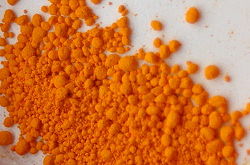- Maslamah Ibn Ahmad al-Majriti
-
Maslama al-Majriti or Abu al-Qasim al-Qurtubi al-Majriti (Arabic: أبو القاسم مسلمة بن أحمد المجريطي, Latin: Methilem; d. 1008 or 1007 CE) was a Muslim astronomer, chemist, mathematician, economist and Scholar in Islamic Spain. He took part in the translation of Ptolemy's Planispherium, improved existing translations of the Almagest, introduced and improved the astronomical tables of al-Khwarizmi, aided historians by working out tables to convert Persian dates to Hijri years, and introduced the techniques of surveying and triangulation.[1]
He was among the most brilliant of Spanish Muslims during the reign of Al-Hakam II. According to Şā'id ibn Ahmad Andalusī he was the best mathematician and astronomer of his time (in Al-Andalus).[2]:64 He also introduced new surveying methods by working closely with his colleague Ibn al-Saffar. He also wrote a book on taxation and the economy of Al-Andalus.[1]
Al-Majriti is greatly reputed for his influential chemical writing. Two chemical writings, the "Sage's Step" (Rutbat al-hakim) and the "Aim of the Wise" (Ghayat al-hakim), are ascribed to him,[1] although almost certainly falsely.[2]:100 Both of his works on Chemistry were translated into Latin in 1252 and named Picatrix; the original Arabic text dates probably from the middle of the eleventh century. The Book The Sage's Step, was also written by Al-Majriti, in 1047-50. Rutbat Al-Hakim (The Rank of the Wise), which amongst other things gives formulae and instructions for purification of precious metals. It was collected and put together in the year 1009, two years after his death.[1]
In this work, Al-Majriti was also the first to note the principle of conservation of mass, which he did in the course of his pathbreaking experiment on mercuric oxide:
I took natural quivering mercury, free from impurity, and placed it in a glass vessel shaped like an egg. This I put inside another vessel like a cooking pot, and set the whole apparatus over an extremely gentle fire. The outer pot was then in such a degree of heat that I could bear my hand upon it. I heated the apparatus day and night for forty day, after which I opened it. I found that the mercury (the original weight of which was a quarter of a pound) had been completely converted into red powder, soft to touch, the weight remaining as it was originally.
He edited and made changes to the parts of the Encyclopedia of the Brethren of Sincerity when the encyclopaedia arrived in Al-Andalus[3][4]
Al-Majriti also predicted a futuristic process of scientific interchange and the advent of networks for scientific communication. He built a school of Astronomy and Mathematics and marked the beginning of organized scientific research in Al-Andalus. Among his students were Ibn al-Saffar, Abu al-Salt and Al-Tartushi.[2]:64
References
- ^ a b c d Sarton, George (1927). Introduction to the History of Science. 1(part 2). Carnegie Institution of Washington. pp. 668-9.
- ^ a b c Şā'id ibn Ahmad Andalusī (1991). Ţabaqāt al'umam (Science in the medieval world). University of Texas Press. ISBN 0292711395.
- ^ H. Kahane et al. 'Picatrix and the talismans', in Romance Philology, xix, 1966, p 575; E.J. Holmyard, 'Maslama al-Majriti and the Rutba 'l-Hakim', in Isis, vi, 1924, p 294.
- ^ One recent study suggests that the authorship of this work should be attributed to Maslama b. Qasim al-Qurtubi (d. 353/964). See Maribel Fierro, 'Bāṭinism in Al-Andalus. Maslama b. Qāsim al-Qurṭubī (d. 353/964), Author of the "Rutbat al- Ḥakīm" and the "Ghāyat al-Ḥakīm (Picatrix)"', in Studia Islamica, No. 84, (1996), pp. 87-112
External links
- Vernet, Juan (2008) [1970-80]. "Al-Majrītī Abu ’L-Qāsim Maslama Ibn Aḥmad Al-Faraḍī". Complete Dictionary of Scientific Biography. Encyclopedia.com. http://www.encyclopedia.com/doc/1G2-2830902778.html.
- Casulleras, Josep (2007). "Majrīṭī: Abū al‐Qāsim Maslama ibn Aḥmad al‐Ḥāsib al‐Faraḍī al‐Majrīṭī". In Thomas Hockey et al. The Biographical Encyclopedia of Astronomers. New York: Springer. pp. 727–8. ISBN 9780387310220. http://islamsci.mcgill.ca/RASI/BEA/Majriti_BEA.htm. (PDF version)
- "Science:The Islamic Legacy; Science in Al-Andalus"
- "Maslama ibn Ahmad al-Majriti - 1007 AD"
- Article on Science in Spain from Encyclopedia Britannica
Alchemy and chemistry in medieval Islam Alchemists and chemists 7th centuryKhālid ibn Yazīd8th century9th century10th centuryIbn Wahshiyya • Muhammed ibn Umail al-Tamimi • Al-Razi • Al-Farabi • Ibn al-Nadim • Al-Majriti • Abu Mansur Muwaffaq11th centuryIbn al-Wafid • Al-Bīrūnī • Avicenna • Al-Khwarizmi al-Khati • Miskawayh • Al-Muizz ibn Badis • Ahmad ibn 'Imad al-Din •12th century13th centuryIbn al-Baitar • Al-Kātibī • Attar of Nishapur • Al-Simawi • Hassan al-Rammah • Mansur al-Kamili14th centuryIbn Rassam • Al-Jaldaki • Abul Ashba ibn Tammam •Theories and concepts Works Kitab al-Kimya • Kitab al-Sab'eenCategories:- 1007 deaths
- Astronomers of medieval Islam
- Medieval Spanish astronomers
- Islamic studies scholars
- People from Madrid
- Alchemists of medieval Islam
- People of Al-Andalus
- Astronomers
- Moorish scholars
- Mathematicians who worked on Islamic inheritance
Wikimedia Foundation. 2010.

